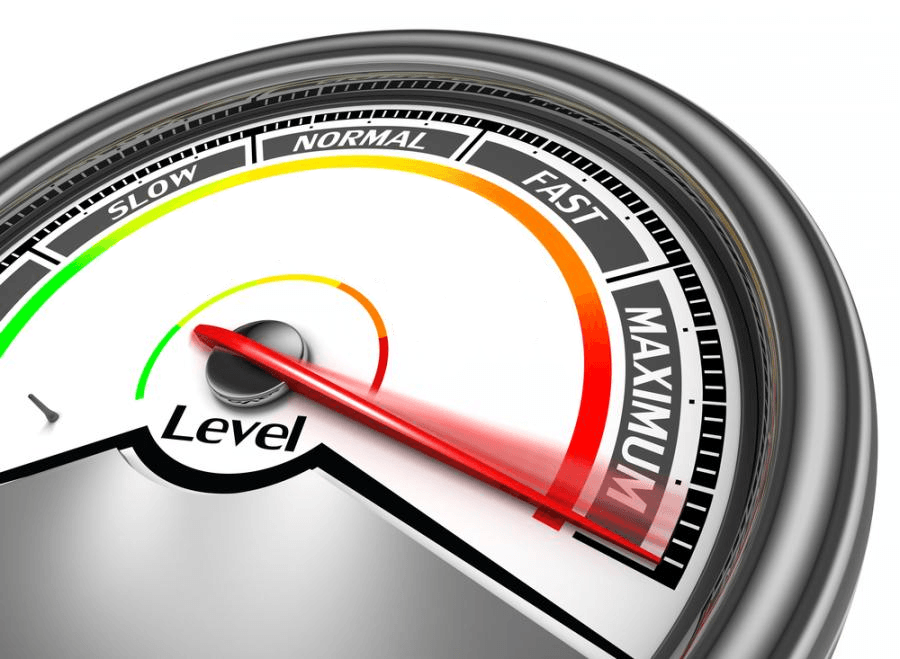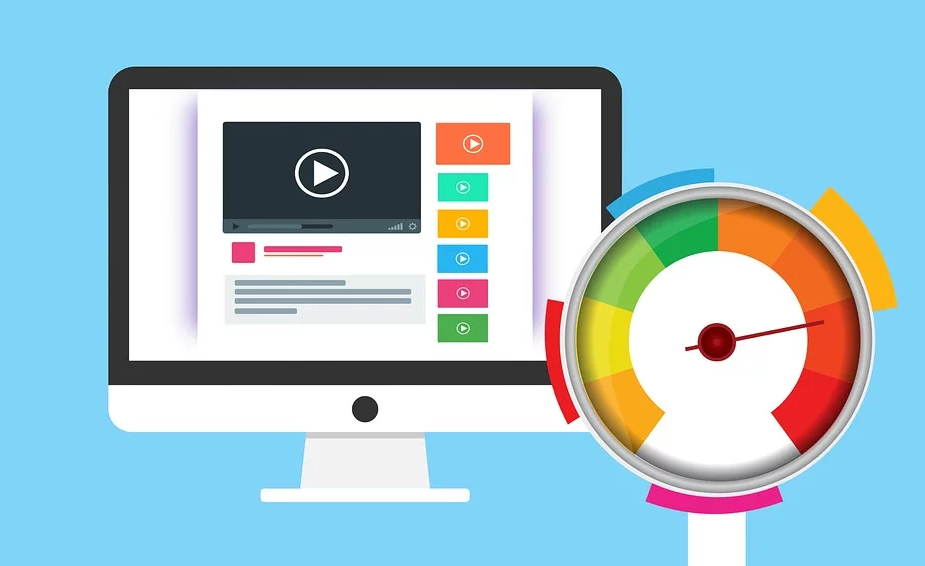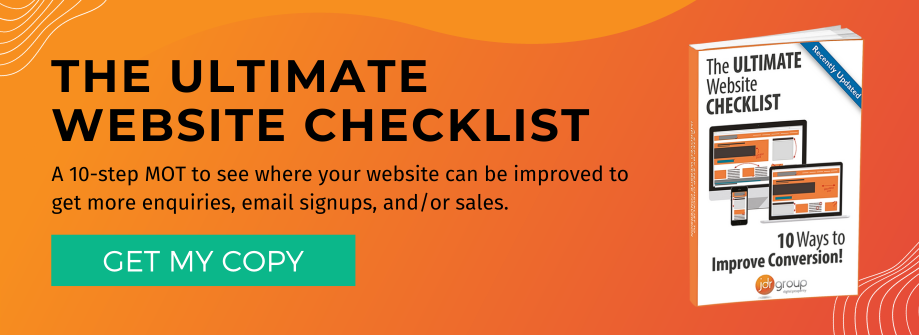How to Reduce Website Load Speed - Five Tips to Speed Up Your Site
by Leanne Mordue on 03-May-2024 11:32:27

Website load time is critical to keeping potential customers on your site. At least one well known study shows that a webpage has about 3 seconds to load before consumers become impatient and begin to abandon the site. Yes, 3 seconds. If webpage load time is that important to your potential customers, doesn’t it make sense that you would be asking “How do I speed up my website?” Here are five tips you can utilise that will help you do just that.
1. Reduce HTTP Requests
As much as 80% of a web page’s response time is spent downloading everything on the page. Clean, simplified web pages load faster than those that are heavy on images, flash and scripts. But, without all of the bells and whistles, can you still create an engaging web page? Absolutely: It’s just a question of moderation and employing a few tricks.
For example, combine all scripts into one. It is challenging when they vary by page, but this crucial step will improve the website load time. Also, make a single image from multiple images. The size won’t be much different, but the reduced number of HTTP requests will speed up the process.
2. Above-the-Fold Content
Google recommends that you focus on minimising the amount of data needed to display the content located above-the-fold. In order to reduce the time it takes a page to load, try setting up HTML so that it loads content located above-the-fold first. For example, widgets that are placed by or originate from a third party should take second place behind the main content when loading.
3. Minify Your Resources
This includes all resources, such as CSS, JavaScript and HTML. Remove all data that is redundant and not necessary, but that which does not impact browser processing. An optimised version of your HTML code can be generated using PageSpeed Insights for Google Chrome. To minify CSS and JavaScript, Google suggests using YUI Compressor. For JavaScript alone, they suggest trying JSMin or Closure Compiler.
4. GZIP AND BROLI
Compression can reduce the size of the HTTP response by up to 90%, significantly improving web page load times. The emergence of BROLI is gaining popularity due to its specific design for websites compared to GZIP, which is tailored for files. When compared directly, BROLI results in a 14% reduction in Javascript files, 21% in HTML files, and 17% in CSS files. Make sure to consider this when making a plan to reduce your website's load speed.
5. WEBP is essential
Utilising WebP format for images is essential for any website. Google explains that WebP images can be up to 26% smaller than PNG, resulting in a significant enhancement of your webpage loading speed. Moreover, Google highlights that incorporating WebP can also boost your website's SEO, leading to better long term results.
5. The Importance of CDNs
The location of the server in relation to the user has an impact on page load speed, but if you spread out your content among several servers it will expedite the load time. A content delivery network, or CDN, will do that for you. A CDN is a group of servers in different places around the world, and they do a couple of things very well. First, a CDN can send cached files from the location closest to the user, and second, a CDN can send cookie-free content.
There is no magic single solution to how to improve website load speed, and some factors are out of your hands altogether. You can’t control the end user’s internet service provider or his bandwidth speed, for instance. However, there are things you can do in development that will help your pages load faster, thus ensuring that your site has a fair shot with the end user. You can also monitor and improve your page speed loading times over time using Google’s PageSpeed Tools.
With page load time becoming more important to the end user, it is more important than ever to ensure that your website load speed is optimised. Follow the tips listed here, and you could see a reduction in your bounce rate due to slow load times.
Please contact us at JDR to learn more about how we can improve your website load speed.
- Inbound Marketing (SEO, PPC, Social Media, Video) (829)
- Strategy (368)
- Sales & CRM (195)
- Marketing Automation & Email Marketing (191)
- Business Growth (167)
- Website Design (161)
- Hubspot (138)
- Lead Generation (117)
- Google Adwords (99)
- Content Marketing (94)
- Conversion (53)
- Case Studies (47)
- News (47)
- Ecommerce (39)
- Webinars (35)
- SEO (26)
- AI (20)
- Events (19)
- LinkedIn Advertising (17)
- Video (17)
- Video Selling (15)
- Software training (13)
- Niche business marketing (11)
- The Digital Prosperity Podcast (10)
- Facebook Advertising (6)
- HubSpot Case Studies (5)
- January 2026 (7)
- December 2025 (15)
- November 2025 (6)
- October 2025 (17)
- September 2025 (16)
- August 2025 (14)
- July 2025 (14)
- June 2025 (5)
- May 2025 (19)
- April 2025 (15)
- March 2025 (13)
- February 2025 (13)
- January 2025 (8)
- December 2024 (2)
- November 2024 (4)
- October 2024 (21)
- September 2024 (4)
- August 2024 (8)
- July 2024 (14)
- June 2024 (16)
- May 2024 (25)
- April 2024 (15)
- March 2024 (18)
- February 2024 (5)
- January 2024 (10)
- December 2023 (6)
- November 2023 (10)
- October 2023 (13)
- September 2023 (12)
- August 2023 (14)
- July 2023 (13)
- June 2023 (14)
- May 2023 (15)
- April 2023 (13)
- March 2023 (14)
- February 2023 (13)
- January 2023 (15)
- December 2022 (13)
- November 2022 (6)
- October 2022 (8)
- September 2022 (22)
- August 2022 (15)
- July 2022 (13)
- June 2022 (16)
- May 2022 (14)
- April 2022 (16)
- March 2022 (17)
- February 2022 (11)
- January 2022 (8)
- December 2021 (6)
- November 2021 (7)
- October 2021 (11)
- September 2021 (10)
- August 2021 (7)
- July 2021 (7)
- June 2021 (4)
- May 2021 (4)
- April 2021 (1)
- March 2021 (3)
- February 2021 (5)
- January 2021 (4)
- December 2020 (7)
- November 2020 (6)
- October 2020 (5)
- September 2020 (9)
- August 2020 (18)
- July 2020 (17)
- June 2020 (17)
- May 2020 (10)
- April 2020 (21)
- March 2020 (24)
- February 2020 (21)
- January 2020 (12)
- December 2019 (23)
- November 2019 (12)
- October 2019 (14)
- September 2019 (16)
- August 2019 (15)
- July 2019 (13)
- June 2019 (6)
- May 2019 (8)
- April 2019 (4)
- March 2019 (2)
- February 2019 (2)
- January 2019 (2)
- December 2018 (3)
- November 2018 (24)
- September 2018 (11)
- August 2018 (9)
- June 2018 (3)
- May 2018 (6)
- April 2018 (14)
- March 2018 (12)
- February 2018 (16)
- January 2018 (15)
- December 2017 (15)
- November 2017 (18)
- October 2017 (23)
- September 2017 (19)
- August 2017 (28)
- July 2017 (27)
- June 2017 (25)
- May 2017 (18)
- April 2017 (17)
- March 2017 (16)
- February 2017 (17)
- January 2017 (14)
- December 2016 (21)
- November 2016 (27)
- October 2016 (25)
- September 2016 (16)
- August 2016 (20)
- July 2016 (19)
- June 2016 (14)
- May 2016 (20)
- April 2016 (24)
- March 2016 (22)
- February 2016 (28)
- January 2016 (27)
- December 2015 (28)
- November 2015 (19)
- October 2015 (9)
- September 2015 (12)
- August 2015 (5)
- July 2015 (1)
- June 2015 (10)
- May 2015 (3)
- April 2015 (11)
- March 2015 (14)
- February 2015 (15)
- January 2015 (12)
- December 2014 (2)
- November 2014 (23)
- October 2014 (2)
- September 2014 (2)
- August 2014 (2)
- July 2014 (2)
- June 2014 (7)
- May 2014 (14)
- April 2014 (14)
- March 2014 (7)
- February 2014 (2)
- January 2014 (7)
- December 2013 (9)
- November 2013 (14)
- October 2013 (17)
- September 2013 (3)
- August 2013 (6)
- July 2013 (8)
- June 2013 (4)
- May 2013 (3)
- April 2013 (6)
- March 2013 (6)
- February 2013 (7)
- January 2013 (5)
- December 2012 (3)
- November 2012 (2)
- September 2012 (1)
Subscribe by email
You May Also Like
These Related Blogs

Can Website Load Speed Impact Customer Sales?
We've all been there, on a website and waiting for it load, big pain right? Sometimes this happens straight away and other times it can happen while y …

How Your Website Speed Impacts Your Conversion Rate
First off, what do we mean by ‘website speeds’ and ‘conversion rates’? Put simply, website speeds are the length of time it takes for a page to load o …

Easy Ways To Make Your Website Faster
Time is money – and that goes for your customers as much as for you. People aren't going to hang around to wait for a website to load like they did in …




